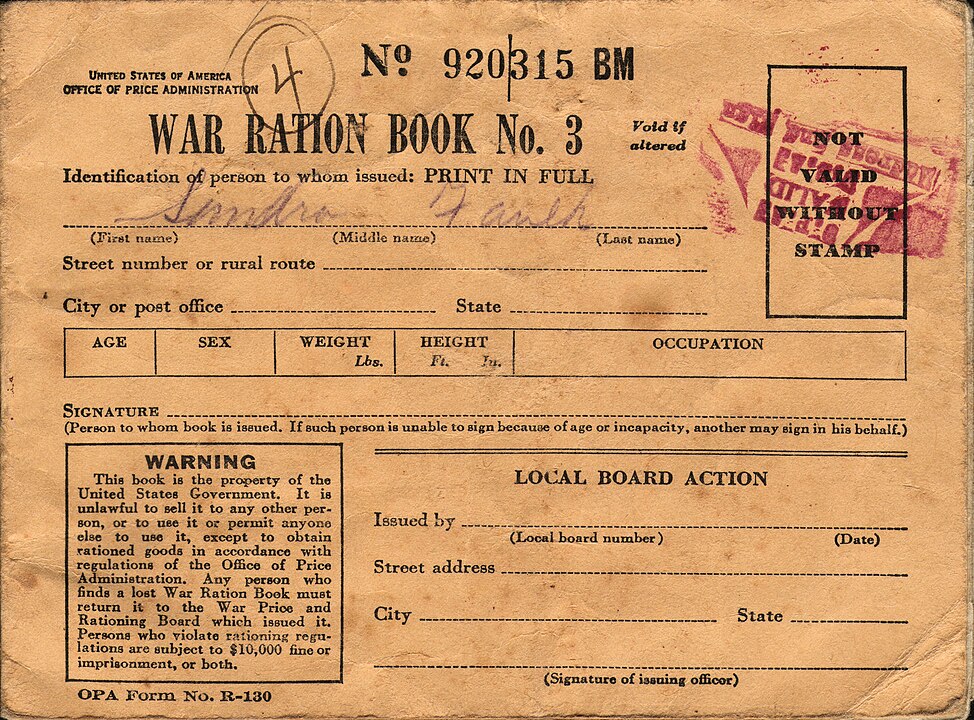Today in 1943, the US Director of Economic Stabilization, James F. Byrnes, issued a pretty momentous statement: in order to save valuable supplies for the war effort, the United States was going to start rationing shoes.
This announcement didn’t come completely out of nowhere.
By this point American troops were fighting World War II in the Pacific as well as in Europe.
The government put limits on all kinds of goods that households used, to make sure that troops had the supplies they needed.
One of the supplies that was in the shortest supply was rubber, because many of the top rubber producers were under Japanese control.
The US had put together a stockpile in case of war, but that was only going to last so far.
So the government told consumers they would only be allowed to buy three pairs of standard new shoes a year.
That was only a slight reduction from what the typical American bought in the course of a year before the war, so it wasn’t supposed to be a big sacrifice.
Well, at least for people who didn’t have kids going through growth spurts.
They were among those who had the most trouble with the new limit.
And the ration was later reduced to two pairs of shoes a year per person, which had more of an effect on people.
Fortunately secondhand shoes didn’t count against the limits, which was good news for shoe wearers and sellers.
People who had essential jobs that required a lot of walking, like police officers or mail carriers, could buy extras.
And if someone lost their shoes in, say, a fire, or as part of a robbery, they could get an exception to the ration, though they had to fill out a really long form to do it.
There was another exception: shoes that didn’t use any new leather or rubber were exempt from the limits too.
Scientists had been working on alternative synthetic rubbers for some time .
There was even a project led by Japanese American scientists being held at internment camps in California.
But the exempt shoes that made it to retail were generally made of plastics and repurposed materials.
The New York Times listed some of those ingredients, “pressed carpet, felt, old brake lining material and even reclaimed fire hose.”
While shoe manufacturers did return to the old ways once the ban was lifted after the end of the war, we should note that the Times wrote that the shoes made of old fire hose were, “reported to be even more durable than a comparable leather sole.”
Something to think about for your next pair of shoes maybe?
Today in 1915, when the US was closely watching developments in what is now called World War I, the New York Philharmonic included a special note in its program asking members of the audience to stop knitting during the performances!
“The Philharmonic Society fully appreciates the spirit that prompts charitable assistance in the great world’s calamity caused by the European war,” the note read, “but many complaints have been received from patrons of the concerts who are annoyed by knitting during performances.”
In other words, take it outside, knitters!
Rationing of Non-Food Items on the World War II Home Front (National Park Service)
1915 Feb 07 / Subscription Season / Stransky (ID: 6287) (New York Philharmonic)
Image via Wikicommons

